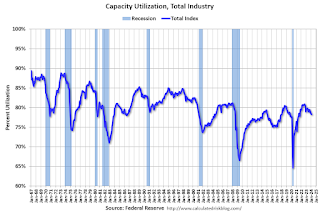Uncategorized
$221+ Billion Worldwide Sewage Treatment Facilities Industry to 2031 – Increased Pressure from Governments on Companies and Increasing Investments in the Market Drives Growth
$221+ Billion Worldwide Sewage Treatment Facilities Industry to 2031 – Increased Pressure from Governments on Companies and Increasing Investments in the Market Drives Growth
PR Newswire
DUBLIN, Jan. 21, 2023
DUBLIN, Jan. 21, 2023 /PRNewswire/ — T…
$221+ Billion Worldwide Sewage Treatment Facilities Industry to 2031 - Increased Pressure from Governments on Companies and Increasing Investments in the Market Drives Growth
PR Newswire
DUBLIN, Jan. 21, 2023
DUBLIN, Jan. 21, 2023 /PRNewswire/ -- The "Sewage Treatment Facilities Global Market Report 2022" report has been added to ResearchAndMarkets.com's offering.
This report provides strategists, marketers and senior management with the critical information they need to assess the global Sewage Treatment Facilities market.
This report focuses on Sewage Treatment Facilities market which is experiencing strong growth. The report gives a guide to the Sewage Treatment Facilities market which will be shaping and changing our lives over the next ten years and beyond, including the markets response to the challenge of the global pandemic.
The global sewage treatment facilities market is expected to grow from $165.28 billion in 2021 to $180.89 billion in 2022 at a compound annual growth rate (CAGR) of 9.4%. The sewage treatment facilities market is expected to grow to $221.62 billion in 2026 at a compound annual growth rate (CAGR) of 5.2%.
Reasons to Purchase
- Gain a truly global perspective with the most comprehensive report available on this market covering 12+ geographies.
- Understand how the market is being affected by the coronavirus and how it is likely to emerge and grow as the impact of the virus abates.
- Create regional and country strategies on the basis of local data and analysis.
- Identify growth segments for investment.
- Outperform competitors using forecast data and the drivers and trends shaping the market.
- Understand customers based on the latest market research findings.
- Benchmark performance against key competitors.
- Utilize the relationships between key data sets for superior strategizing.
- Suitable for supporting your internal and external presentations with reliable high quality data and analysis
Major players in the sewage treatment facilities market include Suez Environnement S A, Buckman Laboratories International Inc, Hitachi, Ecoprog GmbH, and Emerson.
The sewage treatment facilities market consists of sales of sewage treatment services by entities (organizations, sole traders, and partnerships) that are used to operate sewer systems or sewage treatment facilities that collect, treat, and dispose of waste the sewage treatment facilities refer to an arrangement of devices and structures for the treatment of wastewater, industrial wastes, and sludge. They are used as waste treatment plants.
The various treatment systems include centralized and decentralized, which are used in various applications such as industrial and municipal.
The Asia Pacific was the largest region in the sewage treatment facilities market. The regions covered in this report are Asia-Pacific, Western Europe, Eastern Europe, North America, South America, the Middle East, and Africa.
The growth in the sewage treatment facilities market is due to the increased pressure from governments on companies, and increasing investments in the market.
Micro-pollutants that are challenging the treatment capability of conventional wastewater treatment plants are being treated with advanced technologies. Micro-pollutants are contaminants originating from pharmaceutical residues, household chemicals, personal care products, and pesticides. Technologies such as moving bed biofilm reactors (MBBR), ozone-based advanced oxidation, adsorption, and powdered activated carbon (PAC) are being used to remove micro-pollutants from wastewater. For instance, in Germany, advanced technologies such as GE's membrane bioreactor and powdered activated carbon technology are proving to be a cost-effective way of removing micro-pollutants from wastewater.
The countries covered in the sewage treatment facilities market are Australia, Brazil, China, France, Germany, India, Indonesia, Japan, Russia, South Korea, the UK, USA.
Key Topics Covered:
1. Executive Summary
2. Report Structure
3. Sewage Treatment Facilities Market Characteristics
3.1. Market Definition
3.2. Key Segmentations
4. Sewage Treatment Facilities Market Product Analysis
4.1. Leading Products/ Services
4.2. Key Features and Differentiators
4.3. Development Products
5. Sewage Treatment Facilities Market Supply Chain
5.1. Supply Chain
5.2. Distribution
5.3. End Customers
6. Sewage Treatment Facilities Market Customer Information
6.1. Customer Preferences
6.2. End Use Market Size and Growth
7. Sewage Treatment Facilities Market Trends And Strategies
8. Sewage Treatment Facilities Market Size And Growth
8.1. Market Size
8.2. Historic Market Growth, Value ($ Billion)
8.2.1. Drivers Of The Market
8.2.2. Restraints On The Market
8.3. Forecast Market Growth, Value ($ Billion)
8.3.1. Drivers Of The Market
8.3.2. Restraints On The Market
9. Sewage Treatment Facilities Market Regional Analysis
9.1. Global Sewage Treatment Facilities Market, 2021, By Region, Value ($ Billion)
9.2. Global Sewage Treatment Facilities Market, 2016-2021, 2021-2026F, 2031F, Historic And Forecast, By Region
9.3. Global Sewage Treatment Facilities Market, Growth And Market Share Comparison, By Region
10. Sewage Treatment Facilities Market Segmentation
10.1. Global Sewage Treatment Facilities Market, Segmentation By Type, 2016-2021, 2021-2026F, 2031F, Value ($ Billion)
10.1.1. Residential
10.1.2. Industrial
10.1.3. Commercial
10.2. Global Sewage Treatment Facilities Market, Segmentation By Treatment System, 2016-2021, 2021-2026F, 2031F, Value ($ Billion)
10.2.1. Centralized
10.2.2. Decentralized
10.3. Global Sewage Treatment Facilities Market, Segmentation By Application, 2016-2021, 2021-2026F, 2031F, Value ($ Billion)
10.3.1. Industrial
10.3.2. Municipal
11. Sewage Treatment Facilities Market Metrics
11.1. Sewage Treatment Facilities Market Size, Percentage Of GDP, 2016-2021, 2021-2026F, 2031F, Global
11.2. Per Capita Average Sewage Treatment Facilities Market Expenditure, 2016-2021, 2021-2026F, 2031F, Global
For more information about this report visit https://www.researchandmarkets.com/r/4g9hqo
Media Contact:
Research and Markets
Laura Wood, Senior Manager
press@researchandmarkets.com
For E.S.T Office Hours Call +1-917-300-0470
For U.S./CAN Toll Free Call +1-800-526-8630
For GMT Office Hours Call +353-1-416-8900
U.S. Fax: 646-607-1907
Fax (outside U.S.): +353-1-481-1716
Logo - https://mma.prnewswire.com/media/539438/Research_and_Markets_Logo.jpg
SOURCE Research and Markets
Uncategorized
One city held a mass passport-getting event
A New Orleans congressman organized a way for people to apply for their passports en masse.

While the number of Americans who do not have a passport has dropped steadily from more than 80% in 1990 to just over 50% now, a lack of knowledge around passport requirements still keeps a significant portion of the population away from international travel.
Over the four years that passed since the start of covid-19, passport offices have also been dealing with significant backlog due to the high numbers of people who were looking to get a passport post-pandemic.
Related: Here is why it is (still) taking forever to get a passport
To deal with these concurrent issues, the U.S. State Department recently held a mass passport-getting event in the city of New Orleans. Called the "Passport Acceptance Event," the gathering was held at a local auditorium and invited residents of Louisiana’s 2nd Congressional District to complete a passport application on-site with the help of staff and government workers.
'Come apply for your passport, no appointment is required'
"Hey #LA02," Rep. Troy A. Carter Sr. (D-LA), whose office co-hosted the event alongside the city of New Orleans, wrote to his followers on Instagram (META) . "My office is providing passport services at our #PassportAcceptance event. Come apply for your passport, no appointment is required."
More Travel:
- A new travel term is taking over the internet (and reaching airlines and hotels)
- The 10 best airline stocks to buy now
- Airlines see a new kind of traveler at the front of the plane
The event was held on March 14 from 10 a.m. to 1 p.m. While it was designed for those who are already eligible for U.S. citizenship rather than as a way to help non-citizens with immigration questions, it helped those completing the application for the first time fill out forms and make sure they have the photographs and identity documents they need. The passport offices in New Orleans where one would normally have to bring already-completed forms have also been dealing with lines and would require one to book spots weeks in advance.
These are the countries with the highest-ranking passports in 2024
According to Carter Sr.'s communications team, those who submitted their passport application at the event also received expedited processing of two to three weeks (according to the State Department's website, times for regular processing are currently six to eight weeks).
While Carter Sr.'s office has not released the numbers of people who applied for a passport on March 14, photos from the event show that many took advantage of the opportunity to apply for a passport in a group setting and get expedited processing.
Every couple of months, a new ranking agency puts together a list of the most and least powerful passports in the world based on factors such as visa-free travel and opportunities for cross-border business.
In January, global citizenship and financial advisory firm Arton Capital identified United Arab Emirates as having the most powerful passport in 2024. While the United States topped the list of one such ranking in 2014, worsening relations with a number of countries as well as stricter immigration rules even as other countries have taken strides to create opportunities for investors and digital nomads caused the American passport to slip in recent years.
A UAE passport grants holders visa-free or visa-on-arrival access to 180 of the world’s 198 countries (this calculation includes disputed territories such as Kosovo and Western Sahara) while Americans currently have the same access to 151 countries.
stocks pandemic covid-19 grantsUncategorized
Fast-food chain closes restaurants after Chapter 11 bankruptcy
Several major fast-food chains recently have struggled to keep restaurants open.

Competition in the fast-food space has been brutal as operators deal with inflation, consumers who are worried about the economy and their jobs and, in recent months, the falling cost of eating at home.
Add in that many fast-food chains took on more debt during the covid pandemic and that labor costs are rising, and you have a perfect storm of problems.
It's a situation where Restaurant Brands International (QSR) has suffered as much as any company.
Related: Wendy's menu drops a fan favorite item, adds something new
Three major Burger King franchise operators filed for bankruptcy in 2023, and the chain saw hundreds of stores close. It also saw multiple Popeyes franchisees move into bankruptcy, with dozens of locations closing.
RBI also stepped in and purchased one of its key franchisees.
"Carrols is the largest Burger King franchisee in the United States today, operating 1,022 Burger King restaurants in 23 states that generated approximately $1.8 billion of system sales during the 12 months ended Sept. 30, 2023," RBI said in a news release. Carrols also owns and operates 60 Popeyes restaurants in six states."
The multichain company made the move after two of its large franchisees, Premier Kings and Meridian, saw multiple locations not purchased when they reached auction after Chapter 11 bankruptcy filings. In that case, RBI bought select locations but allowed others to close.
Image source: Chen Jianli/Xinhua via Getty
Another fast-food chain faces bankruptcy problems
Bojangles may not be as big a name as Burger King or Popeye's, but it's a popular chain with more than 800 restaurants in eight states.
"Bojangles is a Carolina-born restaurant chain specializing in craveable Southern chicken, biscuits and tea made fresh daily from real recipes, and with a friendly smile," the chain says on its website. "Founded in 1977 as a single location in Charlotte, our beloved brand continues to grow nationwide."
Like RBI, Bojangles uses a franchise model, which makes it dependent on the financial health of its operators. The company ultimately saw all its Maryland locations close due to the financial situation of one of its franchisees.
Unlike. RBI, Bojangles is not public — it was taken private by Durational Capital Management LP and Jordan Co. in 2018 — which means the company does not disclose its financial information to the public.
That makes it hard to know whether overall softness for the brand contributed to the chain seeing its five Maryland locations after a Chapter 11 bankruptcy filing.
Bojangles has a messy bankruptcy situation
Even though the locations still appear on the Bojangles website, they have been shuttered since late 2023. The locations were operated by Salim Kakakhail and Yavir Akbar Durranni. The partners operated under a variety of LLCs, including ABS Network, according to local news channel WUSA9.
The station reported that the owners face a state investigation over complaints of wage theft and fraudulent W2s. In November Durranni and ABS Network filed for bankruptcy in New Jersey, WUSA9 reported.
"Not only do former employees say these men owe them money, WUSA9 learned the former owners owe the state, too, and have over $69,000 in back property taxes."
Former employees also say that the restaurant would regularly purchase fried chicken from Popeyes and Safeway when it ran out in their stores, the station reported.
Bojangles sent the station a comment on the situation.
"The franchisee is no longer in the Bojangles system," the company said. "However, it is important to note in your coverage that franchisees are independent business owners who are licensed to operate a brand but have autonomy over many aspects of their business, including hiring employees and payroll responsibilities."
Kakakhail and Durranni did not respond to multiple requests for comment from WUSA9.
bankruptcy pandemicUncategorized
Industrial Production Increased 0.1% in February
From the Fed: Industrial Production and Capacity Utilization
Industrial production edged up 0.1 percent in February after declining 0.5 percent in January. In February, the output of manufacturing rose 0.8 percent and the index for mining climbed 2.2 p…

Industrial production edged up 0.1 percent in February after declining 0.5 percent in January. In February, the output of manufacturing rose 0.8 percent and the index for mining climbed 2.2 percent. Both gains partly reflected recoveries from weather-related declines in January. The index for utilities fell 7.5 percent in February because of warmer-than-typical temperatures. At 102.3 percent of its 2017 average, total industrial production in February was 0.2 percent below its year-earlier level. Capacity utilization for the industrial sector remained at 78.3 percent in February, a rate that is 1.3 percentage points below its long-run (1972–2023) average.Click on graph for larger image.
emphasis added
This graph shows Capacity Utilization. This series is up from the record low set in April 2020, and above the level in February 2020 (pre-pandemic).
Capacity utilization at 78.3% is 1.3% below the average from 1972 to 2022. This was below consensus expectations.
Note: y-axis doesn't start at zero to better show the change.
 The second graph shows industrial production since 1967.
The second graph shows industrial production since 1967.Industrial production increased to 102.3. This is above the pre-pandemic level.
Industrial production was above consensus expectations.
-

 Uncategorized3 weeks ago
Uncategorized3 weeks agoAll Of The Elements Are In Place For An Economic Crisis Of Staggering Proportions
-

 International1 week ago
International1 week agoEyePoint poaches medical chief from Apellis; Sandoz CFO, longtime BioNTech exec to retire
-

 Uncategorized4 weeks ago
Uncategorized4 weeks agoCalifornia Counties Could Be Forced To Pay $300 Million To Cover COVID-Era Program
-

 Uncategorized3 weeks ago
Uncategorized3 weeks agoApparel Retailer Express Moving Toward Bankruptcy
-

 Uncategorized4 weeks ago
Uncategorized4 weeks agoIndustrial Production Decreased 0.1% in January
-

 International1 week ago
International1 week agoWalmart launches clever answer to Target’s new membership program
-

 Spread & Containment3 days ago
Spread & Containment3 days agoIFM’s Hat Trick and Reflections On Option-To-Buy M&A
-

 Uncategorized4 weeks ago
Uncategorized4 weeks agoRFK Jr: The Wuhan Cover-Up & The Rise Of The Biowarfare-Industrial Complex



















